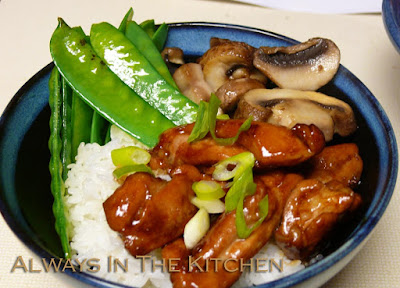
This is the traditional Hallowe'en dinner in our household, but really, you can make it all winter long when the winter squashes are cheap and plentiful. I've used a butternut squash here, but you could of course use any cooking pumpkin with firm, dense flesh (acorn or muscat squash might not be at their best here, because they would likely turn to mush with all the stirring). The final colour of the dish will depend greatly on which squash you decided to use, but usually ranges from an intense yellow to a vibrant orange.
For the shrimp, please check out this Oceanwise resource page for prawns/shrimp if you need help making an informed choice about sustainable harvesting.
If you're vegetarian/vegan, or just not a fan of seafood, you can omit the prawns and still have a beautiful, delicious side dish. Either way, don't drown in in cheese at the end - it really doesn't want or need it.
Prawn & Pumpkin Risotto
Serves 4
4 cups diced-small pumpkin or winter squash
250 grams risotto rice (arborio, carnaroli, or similar)
1 small onion, finely diced
4 cloves of garlic, minced or pressed
4 cups vegetable broth
1/2 cup white vermouth or dry white wine
2 tablespoons olive oil or butter
1 1/2 tablespoons tomato paste
1/2 teaspoon coarse sea salt
1/4 teaspoon ground white pepper
250 grams raw prawns or large shrimp (frozen is fine)
Hot water from a recently boiled kettle (just in case)
If you've read my other risotto recipes, you will know that I am extremely particular about the size of ingredients in my risotto. My theory is, broadly, if it's not a featured ingredient, it should be no bigger than a (cooked) grain of the rice that you are using. Basically, onions, I'm looking at you. Because the squash and prawns are features, they get to be bigger, but I do find having a small dice for the pumpkin here makes a more visually and texturally pleasing choice.
First step, as always, is get your mise en place ready: Peel, clean, and dice your pumpkin, and set aside. If you have a little less pumpkin than 4 cups, it's still fine, although 4 cups gives the best result. Finely dice your onion, and mince your garlic. Warm up your broth and keep it on a low flame on the stove, so it's ready to be ladled into the rice. Clean the shrimp, removing shells (if necessary) and veins. If frozen, rinse them in a sieve under cold running water until they are mostly defrosted. Basically, get all ingredients prepared, measured, and standing by, because you get no further time to prep once you've started cooking. Be sure to boil a kettle, and have the hot water standing by in case you need it later.
In a large saucepan, heat the butter or olive oil over medium heat until quite hot, and then add the shrimp and quickly sauté them until they just barely change colour. Remove to a nearby plate/bowl to add into the risotto later.
In the same saucepan, without cleaning it, add the onion and garlic, and sauté just until the onion begins to turn translucent. Add the salt and white pepper, and stir through.
Next, add the rice and stir well, to get a nice, thin coating of fat on the rice grains. Add the tomato paste, and stir through until it is completely integrated and there are no streaks of red running through the rice. Add the diced squash, and stir it through gently. (You can also reverse the order of adding the rice vs. the squash, no biggie as long as everything is nicely coated in the end. I find it easier to add the tomato paste before adding the squash, though, to get it evenly distributed.)
Add all of the wine/vermouth at once, and stir, carefully scraping up the bottom of the pot so that nothing sticks. Lower the heat to medium-low, and begin to add the warm vegetable broth, one ladleful at a time, stirring gently but pretty much constantly in between each addition until the liquid has been absorbed before adding more. It should take about 25 - 35 minutes to add all of the liquid, and that variable is based on how hot your burner is.
If you get to the end of your broth and find that the rice is not quite cooked enough to your taste, add a little of the hot water from your recently boiled kettle, and continue until the texture is just right - a little bite to the rice, but not crunchy. Next time, you might want to lower the heat a bit more.
When the rice is ready, stir the prawns gently into the risotto. If you want an especially luxurious dish, add in another tablespoon of butter or olive oil, but it's not strictly necessary. Cover the risotto, and remove from the heat. Let stand for five minutes, and then spoon into shallow bowls and serve. Feel free to add a garnish of parsley if you like, but steer clear of the parmesan.

































